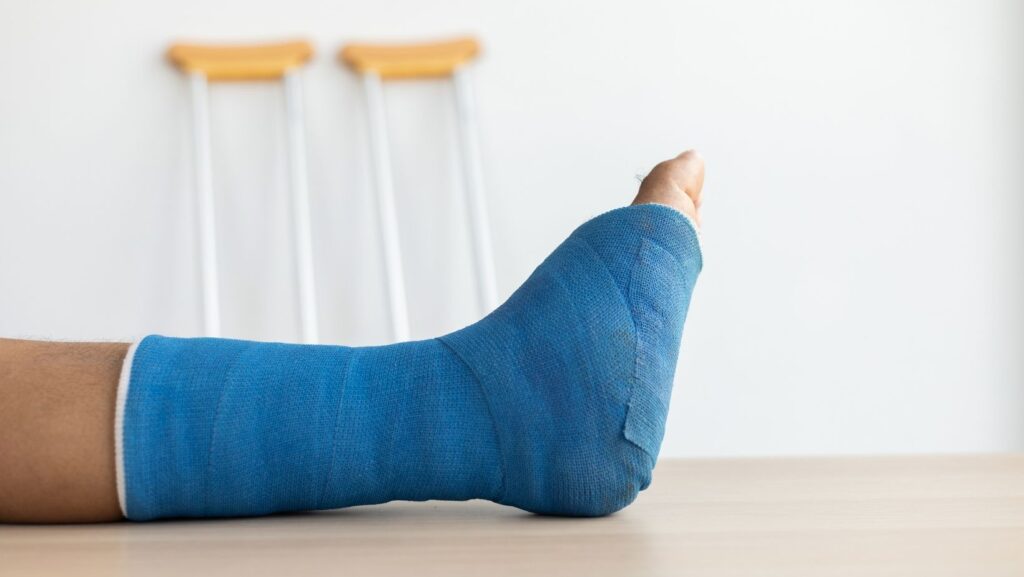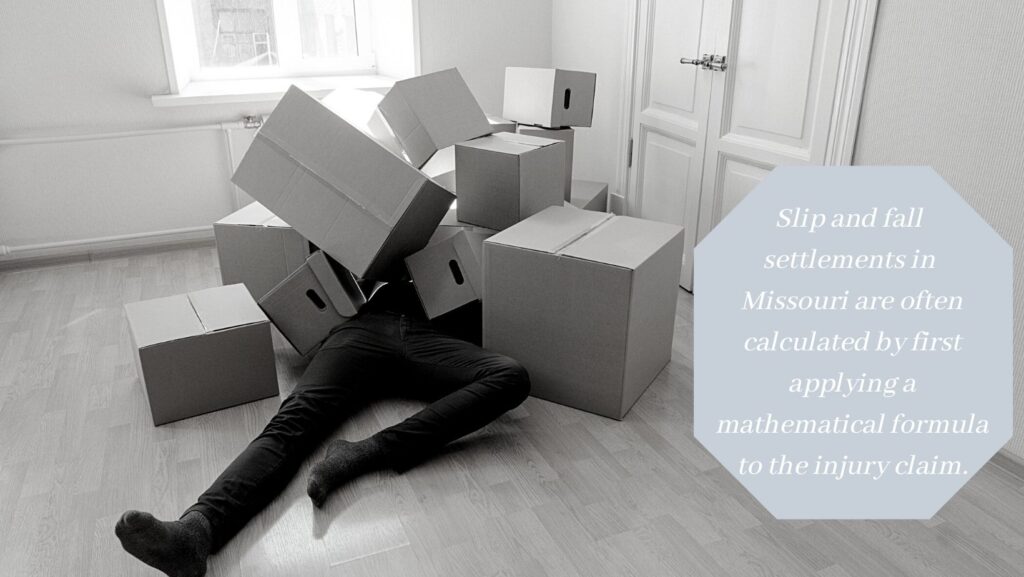How are slip and fall settlements calculated in Missouri?

Following a slip and fall accident, an injured person not only worries about their physical healing. They also worry about how the resulting bills will get paid. They may be unsure about what legal options they have. If the accident took place in Missouri, there are state-specific laws and timelines to further consider. All of these factors weigh into calculating a fair settlement in a slip and fall personal injury claim.
Factors in a Missouri Slip and Fall Claim
If an accident involving a slip and fall results in any injuries, a victim can file what is known as a premises liability claim. This is a claim filed against the property owners to hold them responsible for the victim’s losses.
For a property owner to be held responsible, however, they must be proven to have been knowingly negligent in a way that caused the accident. It is up to the injured victim to prove that the property owners knew of a hazardous or dangerous condition and failed to fix it or post a barrier or warning.
Examples of owner neglect might be:
- An unrepaired broken sidewalk without warning signs to tell pedestrians of its danger,
- a loose or missing handrail on a set of stairs, or
- a wet floor with no signage in place to warn others of the slippery surface.
There are further factors to consider when determining the property owner’s liability, however. This includes whether or not the victim was legally on the property.
Missouri defines three types of visitors and the levels of responsibility a property owner has to each:
- Invitee: Invitees include retail store customers, a patron in the parking lot, or a postal carrier or delivery driver dropping off mail or other packages. Invitees might also be someone inspecting the property like a realtor or a repair service representative.
- Licensee: This refers to a social guest with permission from the owner or tenant to be on the property.
- Trespasser: A burglar or any individual on the property without permission is considered to be a trespasser.
Someone who is legally on the property is more likely to have an eligible compensation claim for injuries in a slip and fall accident. That is why these three distinctions are important.
Property owners are liable for ensuring invitees and licensees a reasonably safe environment when they visit. Owners must also warn them about potential dangers, if they have not removed the hazardous conditions. The owner does not owe a trespasser the same assurances.

It is important to note that children are an exception to these distinctions under Missouri law. A trespassing child has a better chance for compensation in a slip and fall injury claim than an adult trespasser. And property owners also have a greater obligation to warn children about hazardous conditions.
Also important to note: Under Missouri law, a “proper” defendant in a slip and fall case is whoever is in control of the property at the time the injury took place.
This is particularly important for commercial leased property. The landlord of a strip mall, for example, is the property owner. But the tenant of each store or restaurant in the strip mall maintains daily control of their own leased property.
In this setting, the landlord as property owner may not be liable for the conditions that lead to a slip and fall accident and injury. Instead the tenant, as the business owner leasing the space, is more likely to be found liable for the conditions.
Time Limits for Filing in Missouri
Most states have a statute of limitations, or a time limit for how long a victim has to file an injury compensation claim in civil court.
In Missouri, the statute of limitations is five years from the date of the injury.
With an out-of-court settlement, an insurance company typically has 30 days to submit a written offer to a victim. This 30-day period starts on the day an insurance company receives the claim.
Calculating a Missouri-based Settlement
Figuring out exactly how much a slip and fall accident victim has lost financially, physically, and emotionally is the first step to determining how much their claim should be.
Important factors that determine the exact amount include the extent of the victim’s injuries, the economic impact (total dollar amount spent) for treatment and recovery, lost wages, and a fair dollar value given for non-economic injuries (pain and suffering).
More painful injuries can lead to higher compensation settlement amounts, as can more serious or visibly permanent injuries. Longer lasting treatments and recovery times, or more invasive treatments will cost more, and can therefore result in a larger settlement.
If a slip and fall accident victim is pregnant at the time of the incident, injuries to the baby can also lead to increases in the final amounts.
Slip and fall settlements in Missouri are often calculated by first applying a mathematical formula to the injury claim. This “damages formula” is typically used to come up with a starting point for further negotiations.

More About Missouri Law
Missouri is a pure comparative negligence state. This means that a court might find that an injured victim shares in the blame in a slip and fall accident civil court case. If so, the amount of compensation awarded to the victim is reduced by a percentage equal to the level determined to be their fault in the incident.
Let’s say, for example, that a grocery store aisle has a spill that has not yet been cleaned up. However, a caution sign is posted, and a small orange cone further marks the area.
In his haste, a shopper rushes down the aisle to get the item he needs, ignoring the signage and failing to use caution. As a result, he slips and falls, injuring his head, neck, and back.
In our example, the court determines that the injured shopper now has economic and non-economic damages totaling $10,000. But the court also decides that the shopper was 15 percent responsible for the accident because of his carelessness. The business owner, therefore, is determined to be only 85 percent liable for the accident.
Total compensation awarded to the injured victim is thereby reduced by 15 percent, or $1,500. They would receive only $8,500 of the total $10,000 amount. This is because, under Missouri’s pure comparative fault rule, the total damages awarded would be reduced by the percentage of fault assigned to the victim. The victim can only collect 85 percent, or $8,500, from the business owner in this case.
Are There Compensation Limits in Missouri?
Missouri currently has no caps for damages claimed in personal injury cases, including slip and fall accidents. Some other states in the U.S. have laws that place a maximum or “cap” on the amount of damages a victim can seek compensation for in slip and fall or other personal injury cases. These caps vary by state, but most often apply to the amount a victim can seek for non-economic “pain and suffering” damages.
Contact a Missouri Slip and Fall Attorney
Slip and fall accident victims benefit from having an experienced personal injury law firm like Hipskind & McAninch to help them with their personal injury case. They will assist in determining a fair amount to claim, and then work to negotiate the best possible settlement.
At the same time, they will ensure that all steps of the process are followed and that the claim or court case is compliant with Missouri law, including making sure that all of the case’s factors and levels of responsibility are considered.
Category:
Personal Injury, Premises Liability, Slip And Fall Injuries
Tags:
missouri personal injury law, slip and fall, slip and fall compensation, slip and fall settlements